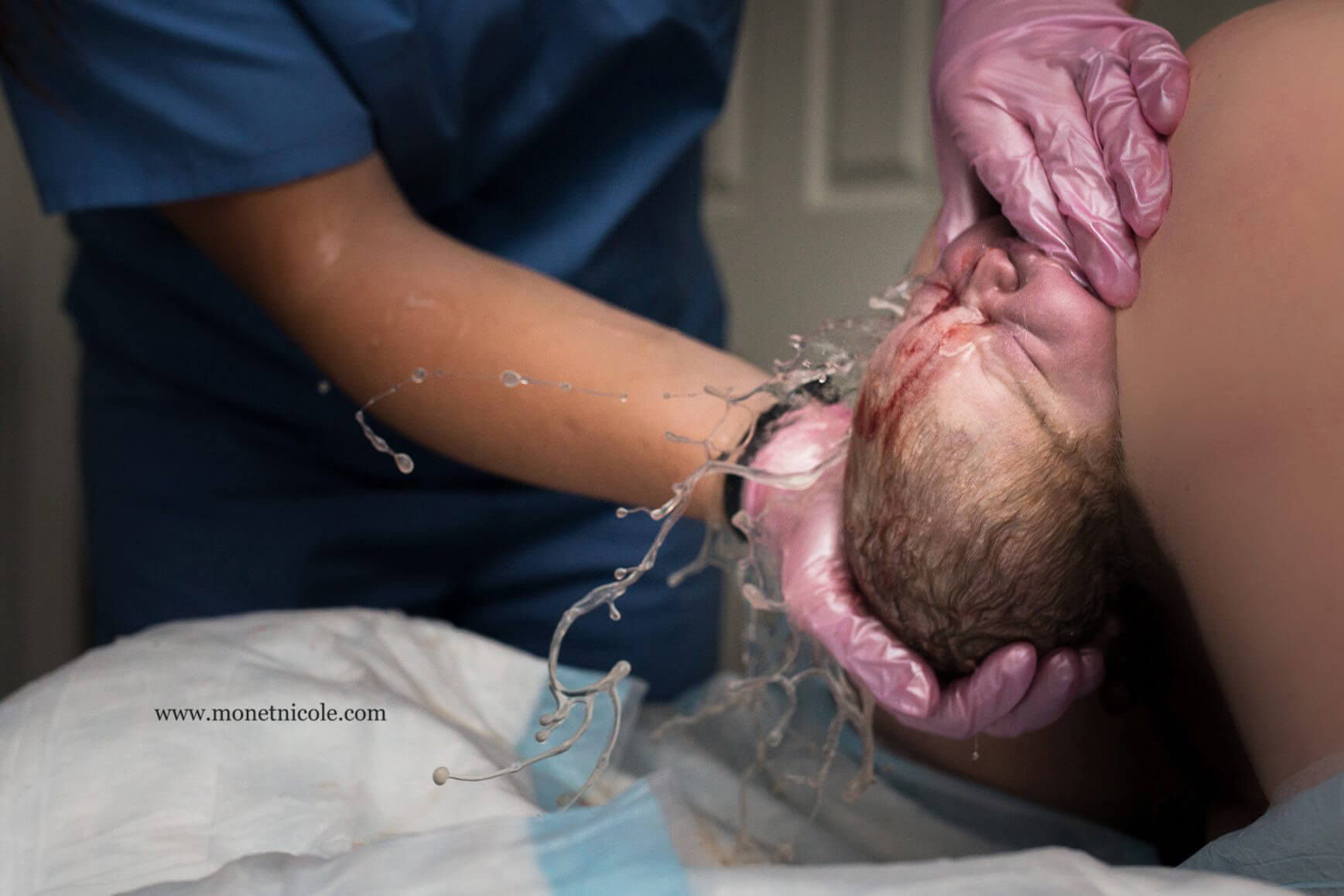The amniotic fluid around the baby is protective and helpful in pregnancy and birthing. In birth, the water in the womb is known to protect the head during descent, and I believe able to aid in fetal rotation by cushioning and by the uterine contraction creating a current passing the baby’s head.
“Amniotic fluid is a complex substance essential to fetal well-being,” states Dr. Mark Underwood in the Journal of Perinatology. Amniotic fluid “contains nutrients and growth factors that facilitate fetal growth, provides mechanical cushioning and antimicrobial effectors that protect the fetus, and allows assessment of fetal maturity and disease,” His research team found.
The Aid of Water
The aid of water in rotation is observed in physics in general, not only the physics of birthing. A one-ton granite sphere can be pushed by a child and rotated on its axis – if a jet of water is sprayed between the stone and its basin. The contraction pushes the water down, often past the baby’s head making a thin cushion for the baby to use to slip past bones. I believe that the stream of amniotic fluid moving between baby and bone helps rotation of the head to fit the next level of the pelvis with more ease.
NOTE: The fascia, which is part of the body and part of the tissues of the pelvis, is hydrated by both drinking and a gentle stretch so Nature provides more than one way to help baby ease their way.
Dr. Ashley Battarbee’s research, reported in The Journal of Maternal-Fetal & Neonatal Medicine, shows increased chance of cesarean if the provider breaks the amniotic membrane to release the amniotic fluid early in labor. Dr. Ashraf Nabhan reports the finding of fetal heart rate abnormalities with artificial rupture of the membranes (AROM) and Seneviratne confirms this compared to when the membranes release on their own (spontaneous rupture of the membranes SROM). Dr. Yvonne Cheng showed more posterior presentation. This common intervention could have been done in an attempt to shorten a posterior labor but also suggests that the baby was less likely to turn when AROM occurred. My advice: Keep the cushion.
Sometimes nature releases the water. Sometimes a provider does. While labor is statistically shorter, IV drugs are increased with AROM (Seneviratne) and we would like to see our recommended techniques compared to AROM as a way to shorten a long labor. Meanwhile, birthing parents using Spinning Babies® approach have asked if the techniques can be used once the water has released.
Can We Do Spinning Babies® Approach When the Water is Released?
Forward-leaning Inversion(FLI), Side-lying Release, and other recommended techniques for body balancing can be done with or without membranes intact.
The actual contraindications are listed with each technique description on our website. As we learn, we add, so check there during each review of the instructions.
There will be individuals decisions made about whether or not to artificially “break the water” with a long, plastic amnion hook. Consider individual needs whether not to do Forward-leaning Inversion for a person after the water breaks, for instance, a small and high baby might lead a midwife to choose to wait until baby comes down.
The paradox would be that the Forward-leaning Inversion will help baby come down if a twist or tension in the ligaments is why baby remains high. We really need more documented research on the effects of FLI in various situations. We do see benefits of inversion during labor when baby is not applied well to the cervix whether the head is posterior or tipped (asynclitic), or even ideally positioned but staying high, even during pushing stage. The steeper inversion, especially when done correctly, can be safe and effective and an important addition to body balancing for easier birth or amazingly effective by itself as a single technique during many (but not all) births.
I often relate the safety of FLI to crossing a street. With a few safety considerations, we can routinely cross the street. For FLI the safety factor is foremost, prevent a fall by looking where you are going to put your hands and how you come back up. But there are some conditions in which we will wait to cross the street or not do it at all. IN FLI, that’s high blood pressure. If the blood pressure is dangerously high, inversion can increase blood volume to vulnerable capillaries in the head. Good nutrition and proper assessment of the health of the birthing person is an important consideration to increase the safety of all birthing people so be mindful before “diving” into inversions.
To summarize, amniotic fluid has value to health and the birthing process. If nature leaves the amniotic fluid around baby’s head, don’t rush to remove it. See more on helping a long labor to shorten up with physiological body balancing and birth positions on our website.
References
Image credit: Monet Nicole

